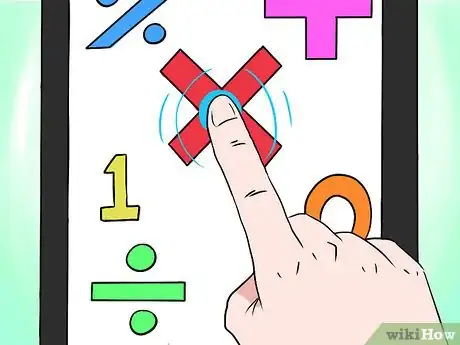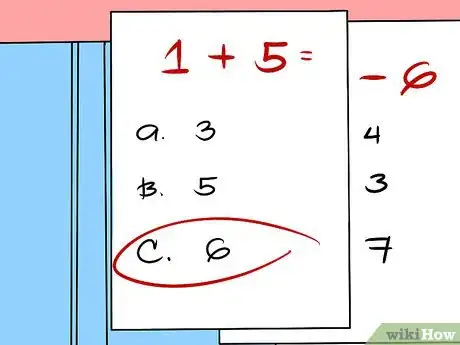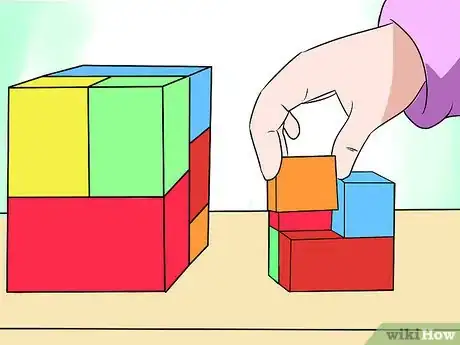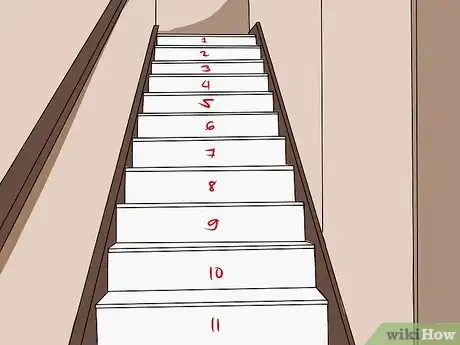X
wikiHow is a “wiki,” similar to Wikipedia, which means that many of our articles are co-written by multiple authors. To create this article, volunteer authors worked to edit and improve it over time.
This article has been viewed 80,334 times.
Learn more...
No two autistic individuals are the same, and it is difficult to generalize about autistic people. However, autistic individuals tend to do well with numbers. They are generally able to recite and order off numbers, which may be due to an enhanced ability to understand systems. Since every autistic child is unique, you will need to tailor their learning to their individual needs.
Steps
Part 1
Part 1 of 3:
Accepting the Challenges of Teaching an Autistic Child
-
1Be prepared to find communication challenging. They may not tell you that they do not understand, or they may not be following your explanation at all. If they do not understand, they will more than likely not ask the appropriate questions.[1]
- If the child is partially verbal or nonverbal, give them time to communicate with alternative communication. This may be typing, sign language, or something else.
- If the child cannot use AAC, teaching basic communication should take priority over teaching math.
-
2Know that autistic children may struggle with receptive language. They may have trouble with auditory processing, or translating sounds into words inside their head. If this is the case, written/visual aids can be helpful.[2]
- Many concepts can be shown through visual examples, but they are generally paired with verbal instructions. This is where the difficulty lies. Try to use visual cues as often as possible when teaching your child.
Advertisement -
3Understand that the autistic child may be disinterested in the subject. Autistic children may display little interest in subjects outside their special interests. In order to get them to pay attention and learn, you'll have to make it especially interactive and fun.
-
4Be ready to confront impaired motor skills. Math is often associated with pencils and paper. Fine motor skills are generally affected, and this can create a challenge in terms of mathematics. Learning to write numerals, while manipulating them onto paper can be very overwhelming.[3]
- Technology can be utilized to overcome this issue to an extent—the child may find it easier to push buttons and touch screens than to physically grasp a pen.
Advertisement
Part 2
Part 2 of 3:
Overcoming the Challenges
-
1Incorporate the child’s interest into your teaching. It is great to incorporate their interests into math problems. For example, if your daughter loves horses, use toy horses to demonstrate math facts.[4]
- If possible, try to find a horse workbook. This may peak interest regarding the work that needs to be completed.
-
2Give praise as often as possible. Although they may seem detached sometimes, autistic children are eager learners. Give them constant reassurance—this is very essential when learning to keep them motivated.
- It will also keep them happier and associate learning time with positivity. Instead of dreading it, they may recognize it as a time they get positive attention.
-
3Try to avoid asking ‘yes’ or ‘no’ questions by asking multiple choice questions instead. In terms of language, if your child or student has low verbal skills do not use responses that call for a 'yes' or a 'no'. The confusion associated with the language barrier may interfere with learning math concepts. Using multiple-choice based questions makes this barrier a bit easier to handle.
-
4Have the child replicate your actions. Having children replicate your actions is highly successful. For example, you collect four blocks, then they collect four blocks. Show them how you're left with three books, once one is put somewhere else.
- In essence, you are training the child to mirror you. She'll slowly see the conclusions of your actions and be able to draw conclusions herself when you're not around.
-
5Keep the child’s skill levels in mind when creating the lesson plans. Be conscious of their skill level and go from there. Your child may not be at their appropriate grade level, so focus on their skill level instead. Certain areas of math may come easier to them than others. This means that you may need to approach certain math topics at a different skill level than the next.
- Just because a child is developmentally behind in terms of speaking does not mean they will be behind in math.
- Sometimes, disinterest indicates that the work is not challenging enough. If this happens, try giving them harder work, or leaving a more difficult workbook out and seeing if they interact with it.
-
6Give one instruction at a time, rather than piling the instructions onto the child. Autistic children struggle with remembering sequences. If the child is able to read, write each instruction down. If the child struggles responding to the first set of instructions, do not confuse them by trying a second set.[5]
- Try narrating the steps one at a time as the child completes them. For example, "First, you add two to both sides. Then, you divide both sides by 5. Now you have your answer, x = 7."
- Think of them as a foreign language learner. They need a bit more time to process what you're saying, so keep the instructions short and snappy. The easier they are to recall, the better.
-
7Experiment with colors to help the child learn more easily. If your child has visual processing difficulties, many children find that black font is easier to process when it is on colored paper (reducing contrast).
- A light blue, or tan is a great place to start. These are neutrals that the eye finds easy to process, too.
-
8Use games to help the child understand mathematical concepts. Games have always been a light way to learn math as a lot of constructive games have been designed which centers the improvement of math skills of a child. The difficulty level also varies based on the age of the child.
- Games are colorful and fun, making them grab children's attention. It is something that today’s kids are very fond of and would do without any resistant. This is like teaching them without even telling that they are being taught.
- For instance, famous games like Candy Crush Saga have been working on improving segmentation logic and if we go a little higher on the difficulty level then we have 2048, a game which involves all math skills and facts.
Advertisement
Part 3
Part 3 of 3:
Creating a Good Learning Environment
-
1Keep the environment quiet, with minimal distractions. This makes it a pleasing sensory environment, especially for hypersensitive children. Try to sit near a wall or corner, so sensory input comes from fewer directions.[6]
-
2Teach the child in a familiar environment. The child will feel more comfortable in a familiar place, and will be less likely to be distracted by all the new elements.
- For instance, while teaching addition and subtraction, you can take your child to your staircase, give a number to each stair with 0 in the middle, going upward towards +5 and coming downwards towards -5. He is to stand on 0 and asked to add 2 for which he can jump upstairs and if asked to subtract 3, he can come 3 steps down.
-
3Teach the child one-on-one. Autistic children learn better if they're in a one-on-one environment. This helps them build self-esteem and confidence. You can focus specifically on their needs. There are also fewer distractions if they're the only ones in the room with you.
- It's easier for you, too. Concentrating on one child is difficult enough—to concentrate on more would spread your attention thin.
-
4Keep the learning environment clutter-free. Keep the work space clear of various distractions. Visual distractions are very common, and may interfere with the learning process. Only put necessary items on the desk.[7]
- Keep all of the child’s work organized and in the same place, too. Keep all resources in one secure location. This way, the child can go back and review their lessons in detail. Lay out each concept clearly, isolating that specific example. That way, each concept is kept separate from other concepts.
-
5Fidgeting (known as "stimming" in the autistic community) can help autistic children concentrate and stay calm. Try giving them an object to manipulate in one hand as they work, such as a squishy stress ball, a tangle, a little beanbag, or whatever they prefer. If they are very fidgety, try seating them on an exercise ball, so they can bounce as they work.[8]
- To make it fun, try keeping a sensory bin of colorful fidgets, and tell the child to pick one out before the lesson begins.
- Their stimming may look unusual to you (e.g. rocking or bouncing). Even if it does, assume that it serves an important purpose. Only intervene if it's unsanitary (e.g. putting objects in their mouth) or harmful (hitting themselves), in which case you can suggest a different stim to them (chewing gum, hitting a pillow).
- Excessive fidgeting (i.e., fidgeting to the point that they cannot do any work) indicates that they are stressed, or they are not getting enough exercise.
-
6Make sure the child knows how to express basic needs. If the child cannot do this, they may be unable to tell you when something is wrong, and you will wonder why they aren't focusing like usual. The child should know how to say...
- "I need a break, please." (A five-minute break for stimming can calm an overwhelmed child.)
- "I'm hungry/thirsty."
- "I need to go potty."
- "_____ is bothering me."
- "I don't understand."
- The child also needs to know that you will honor their requests. When they try to advocate their needs, immediately pay attention.
-
7Make sure the learning environment is well-stocked with objects that can help you to teach the child math. Math has always been a subject which is learned better if taught with the help of a lot activities. Be it an autistic child or a neurotypical child, activities always help.[9]
- One of the most common tools that are used by almost all kids while learning basic addition and subtraction is the abacus. The abacus provides a visual representation that helps them understand the concepts behind basic math.
- For instance, a pizza of 8 slices can be used to teach the basics of fractions. A full pizza is 8/8 but if 2 slices are taken out then the fraction becomes 6/8 which means 2 slices are missing. After the class, eat the pizza together. The child will always remember the pizza while doing fractions and put and take imaginary slices out of the imaginary box whenever she is doing a question.
Advertisement
References
- ↑ https://www.appliedbehavioranalysisprograms.com/what-all-teachers-should-know-about-autism-in-the-classroom/
- ↑ https://www.iidc.indiana.edu/pages/Teaching-Tips-for-Children-and-Adults-with-Autism
- ↑ http://www.ncbi.nlm.nih.gov/pmc/articles/PMC2892026/
- ↑ https://www.appliedbehavioranalysisprograms.com/what-all-teachers-should-know-about-autism-in-the-classroom/
- ↑ https://www.iidc.indiana.edu/pages/Teaching-Tips-for-Children-and-Adults-with-Autism
- ↑ https://www.teachforamerica.org/stories/6-tips-for-teaching-students-with-autism
- ↑ https://www.teachforamerica.org/stories/6-tips-for-teaching-students-with-autism
- ↑ https://raisingchildren.net.au/autism/behaviour/common-concerns/stimming-asd
- ↑ https://www.iidc.indiana.edu/pages/Teaching-Tips-for-Children-and-Adults-with-Autism
About This Article
Advertisement














































































Medical Disclaimer
The content of this article is not intended to be a substitute for professional medical advice, examination, diagnosis, or treatment. You should always contact your doctor or other qualified healthcare professional before starting, changing, or stopping any kind of health treatment.
Read More...